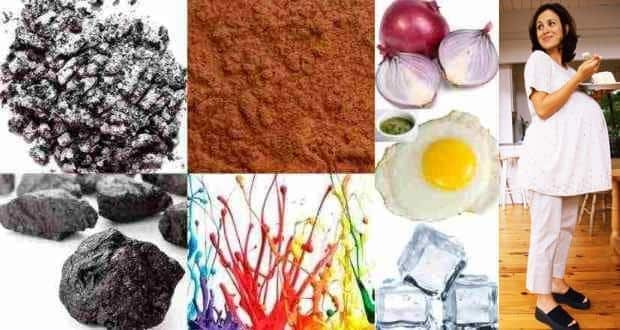

This is because the individual is not consuming enough calories and nutrients to support their body weight. Weight LossĪnother common physical symptom of PICA disorder is weight loss. It may also be difficult for the individual to pass stool due to the irritation and inflammation in the digestive system. In addition, the non-food items that are being consumed can cause blockages in the intestines.

This is because the individual is not consuming enough food and fiber to keep their digestive system functioning properly. ConstipationĪnother common physical symptom associated with PICA disorder is constipation. There may be other causes of stomach upset associated with PICA disorder, such as intestinal blockages or constipation. Also, many sharp objects can cut or puncture the stomach lining. This is because the individual is constantly ingesting non-food items that can cause irritation and inflammation in the stomach. Stomach pain is one of the most common physical symptoms associated with PICA disorder. There are many signs and symptoms associated with PICA disorder, but they can be broadly divided into three main categories: They will be able to properly diagnose and treat the condition. If you think that you or your child may have PICA disorder, it is important to speak with a doctor or mental health professional. In addition, PICA disorder can lead to gastrointestinal issues such as constipation, diarrhea, and intestinal blockages. Individuals with PICA disorder may suffer from malnutrition due to their lack of intake of nutrients. PICA disorder can have serious consequences if left untreated. Another theory suggests that PICA disorder may be a result of abnormal functioning of the hypothalamus. One theory suggests that PICA disorder may be caused by a deficiency in iron or zinc. However, several theories have been proposed. The exact cause of PICA disorder is unknown. PICA disorder is more common in females than males and is seen more often in African American children than Caucasian children. PICA disorder is most commonly diagnosed in children between the ages of two and four years old. In some cases, people with PICA disorder may also eat ice chips or ice cubes. The most common items that are craved include dirt, clay, chalk, sand, ashes, paper, paint chips, and even hair. PICA disorder is a rare eating disorder that is characterized by an intense craving for non-food items. 8.3 Providing support and understanding.8.1 Encouraging healthy eating habits and a balanced diet.
Causes of pica in pregnancy how to#
8 How To Help Someone With PICA Disorder?.Low birth weight, premature birth, mental and physical abnormalities among infants whose mothers practice pica during pregnancy.High blood pressure, high levels of sodium salts in the blood, and abnormal liver functions such as those resulting from consuming large quantities of baking powder.Infestations of parasites such as tapeworms resulting from consuming dirt or feces.Damage to teeth and gums from chewing abrasive materials such as twigs or metals.Nutritional deficiencies, such as the interference of soil with the absorption of iron, zinc, and potassium in the digestive system.Inadequate protein or energy-intake from consuming things like coffee grounds or oyster shells in place of real food.Obesity from consuming too many calories, such as eating laundry starch.Obstruction of the bowel or airways from consuming or choking on indigestible materials such as hair.Poisoning, such as lead poisoning from eating chips of old paint or soil that has old paint in it.If pica is a result of stress, treatment may involve talk therapy or family therapy and the development of coping skills, such as learning stress-reduction techniques or finding a safe substance to chew on instead. If pica is a result of inadequate supervision, treatment may involve educating the family and teaching children to distinguish between food and non-food items, and addressing housing and economic needs if possible. Doctors may treat the medical problems first, assess potential causes of the disorder such as nutrient deficiencies, and then develop a treatment plan that may involve changes to diet and nutrition as well as therapy.

Treatment for pica varies based on what substance the person has consumed and how it has affected the body. Therefore, it’s important to monitor and treat the condition as early as possible. However, it may also lead to medical complications such as intestinal obstruction, bowel problems, weight loss, broken teeth, infections, or poisoning.


 0 kommentar(er)
0 kommentar(er)
